Abstract
Oxazolone-specific cytophilic antibodies in the sera of non-immune CBA mice and mice contact-sensitized with oxazolone, were studied with a rosette test employing peritoneal exudate macrophages and oxazolone-coupled sheep erythrocytes. Macrophage rosettes, produced by direct or indirect cytophilic antibodies, were found to depend on optimally hapten-coupled erythrocytes. Sera obtained 1 week after contact sensitization with oxazolone contained principally 7S IgG2a cytophilic antibodies. Monomeric 7S IgM antibodies cytophilic for macrophages may have been present as well. Primary contact sensitization and boosting was found uniquely to lead to high titres of hyperimmune oxazolone cytophilic antibodies predominantly binding to trypsin-sensitive macrophage receptors.
It has been previously shown that specifically sensitized macrophages mediate a component of delayed skin reactions in mice contact sensitized with oxazolone. Since these reactions can be transferred by immune serum or by normal macrophages coated with immune serum, and since acquisition of this passive sensitization can be abolished by prior trypsinization of these cells, it is suggested that 7S IgG2a and/or 7S IgM cytophilic oxazolone antibodies attaching to trypsin-sensitive macrophage receptors, mediate the specific macrophage component of contact sensitivity in mice.
Full text
PDF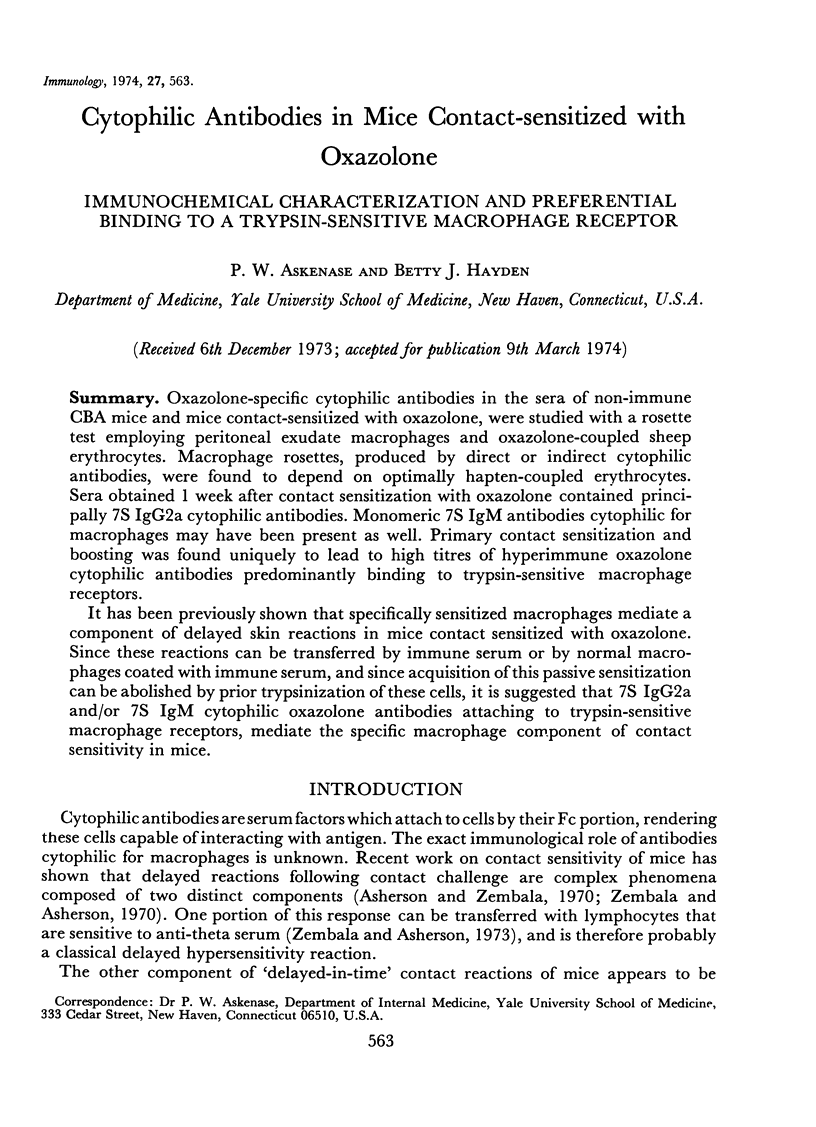
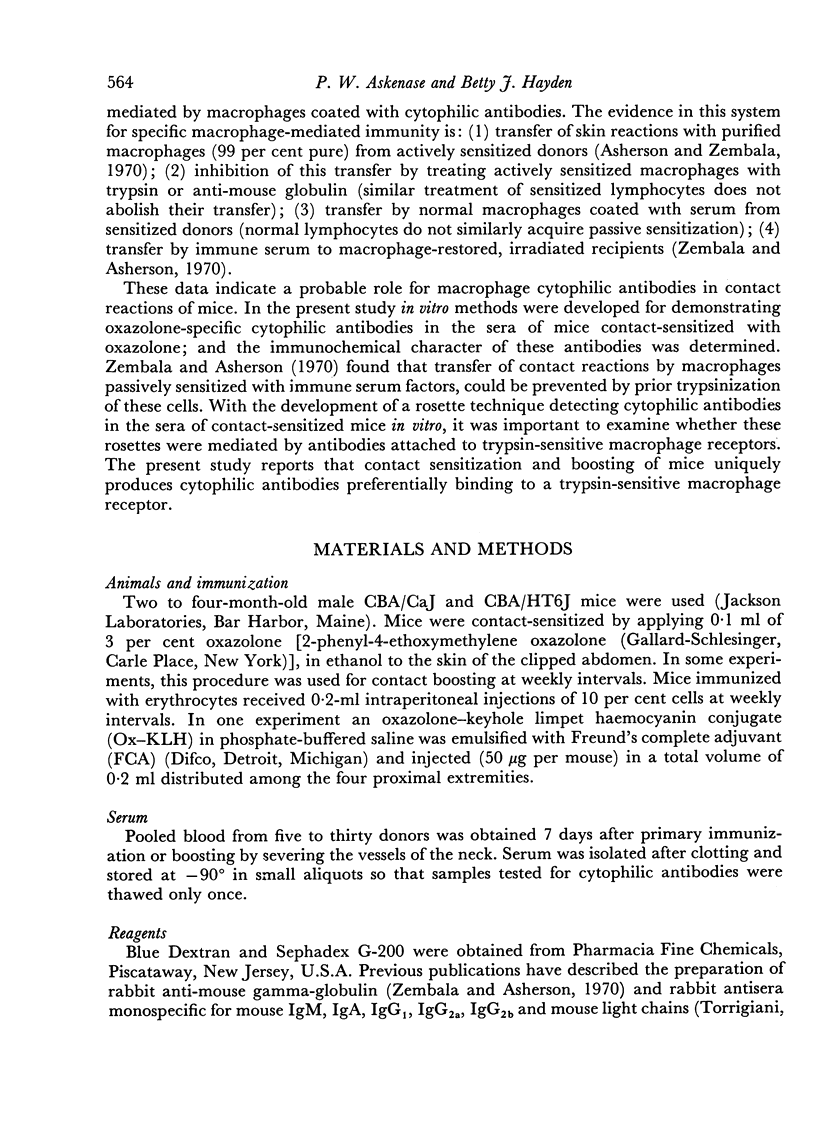
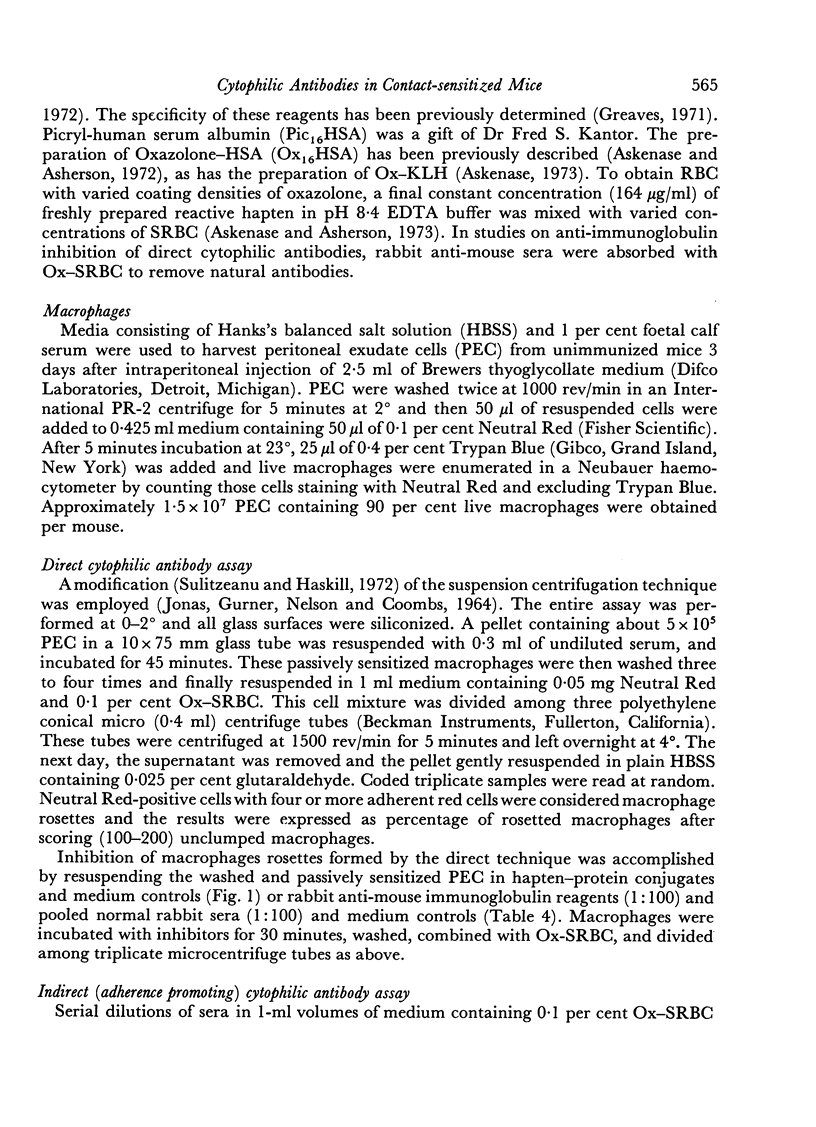
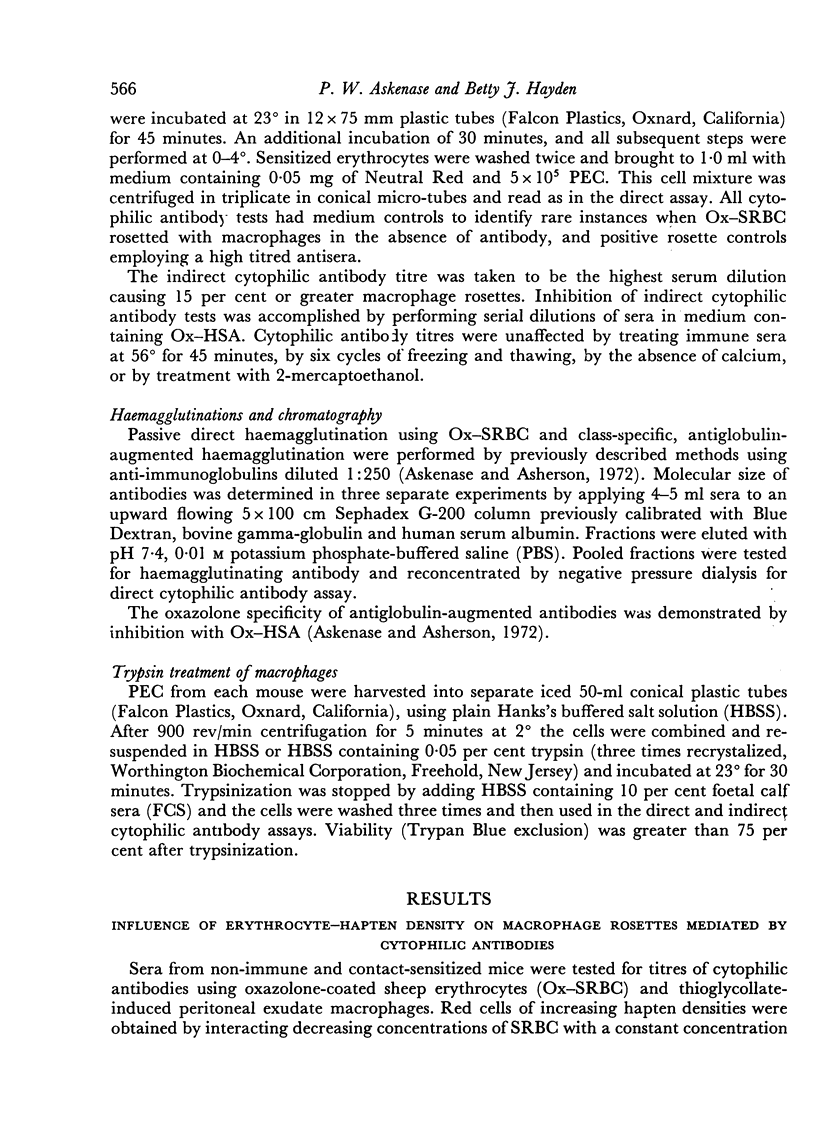
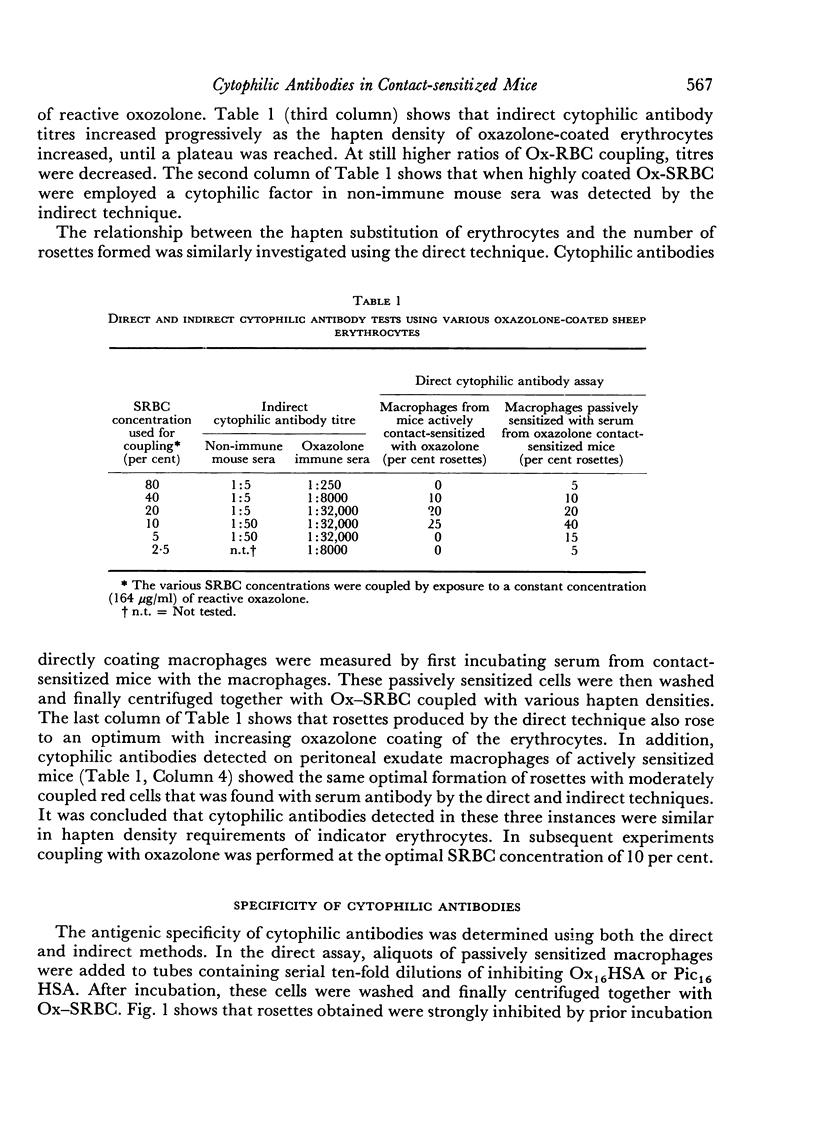
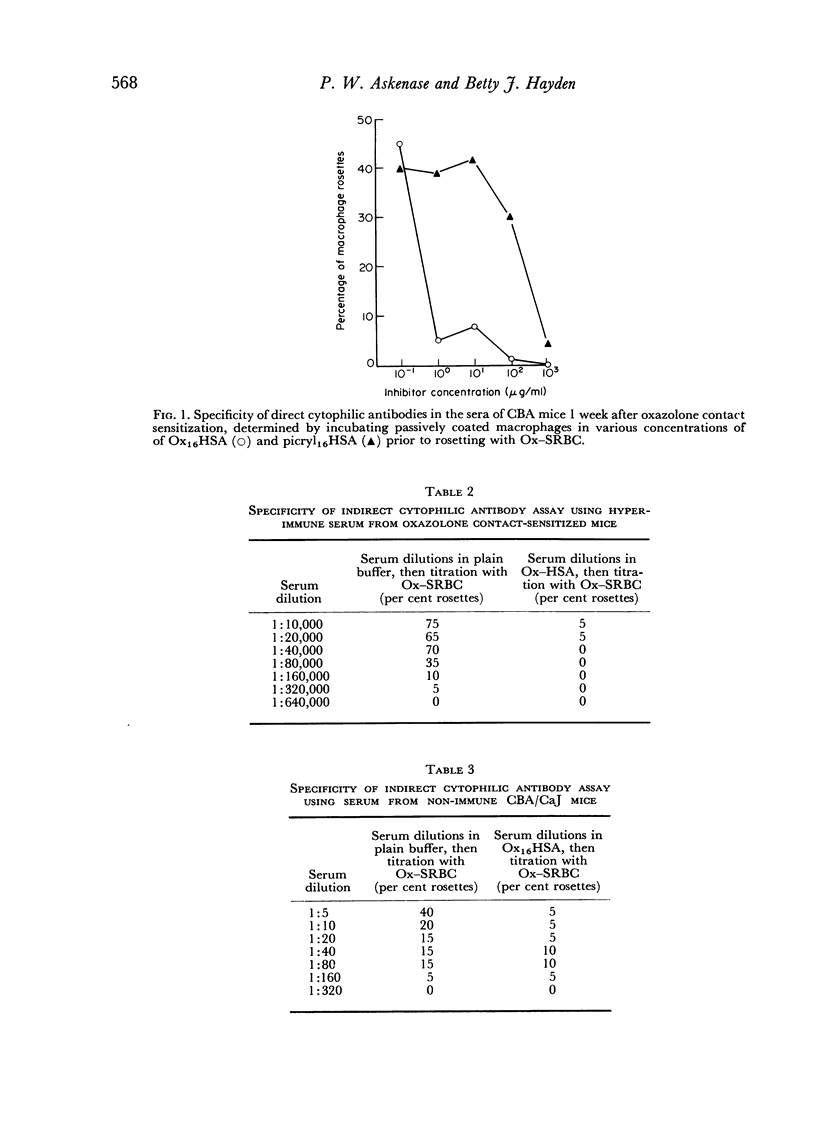
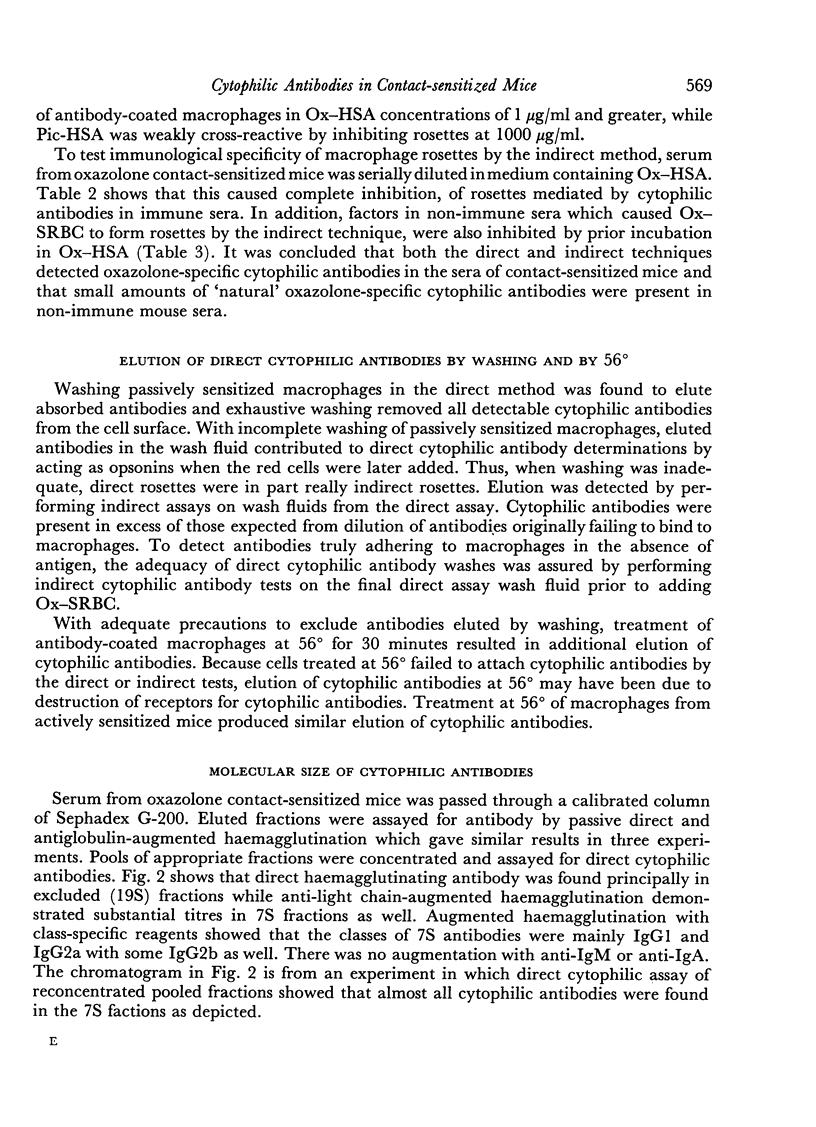
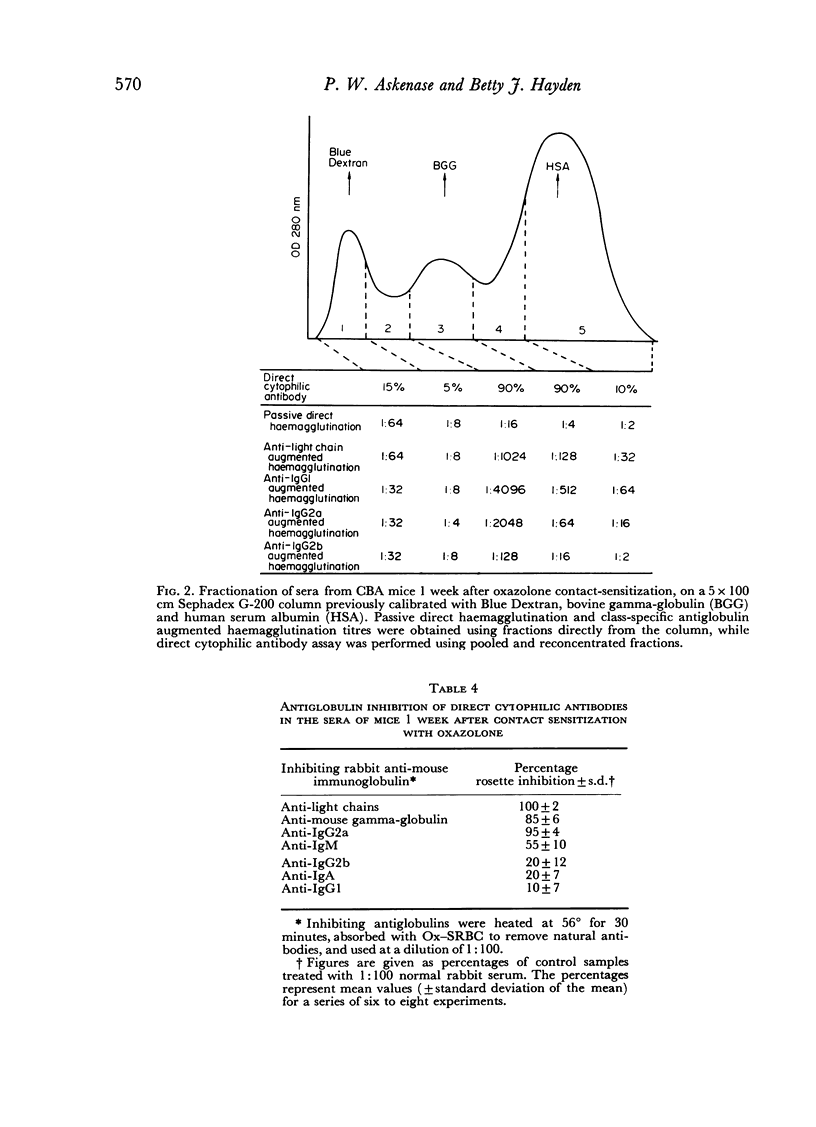
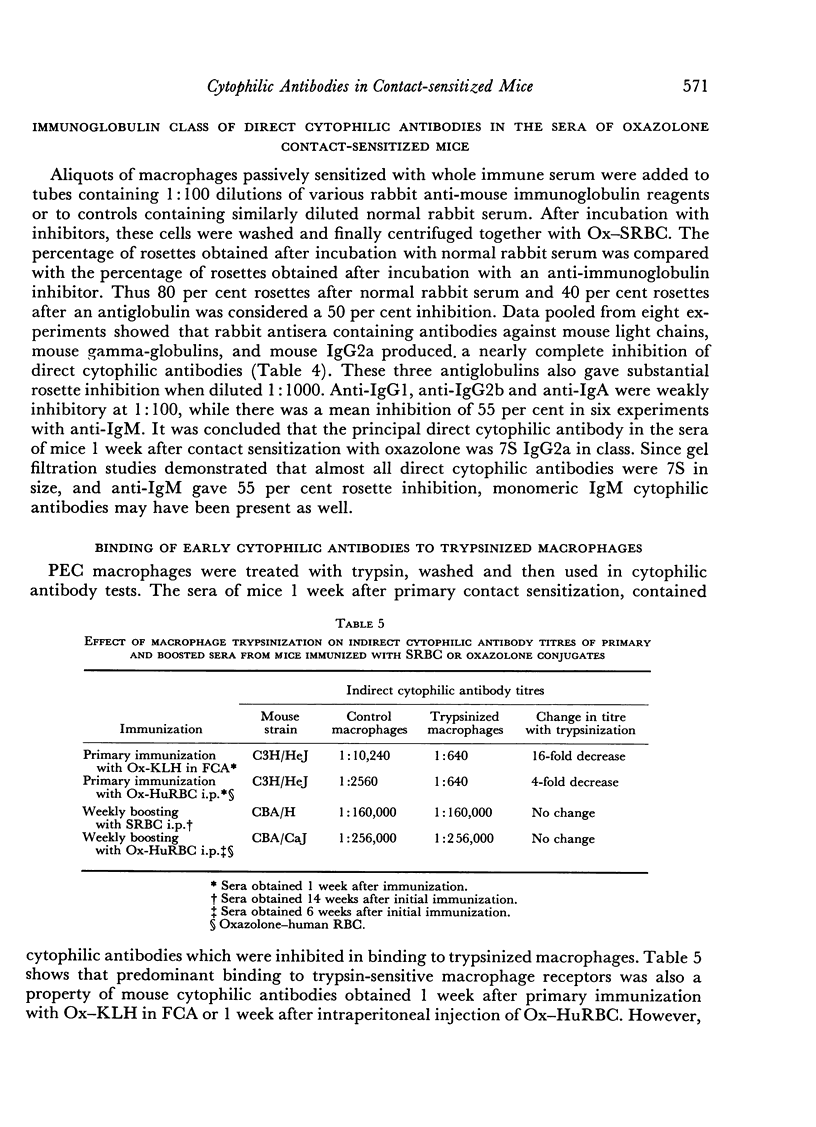
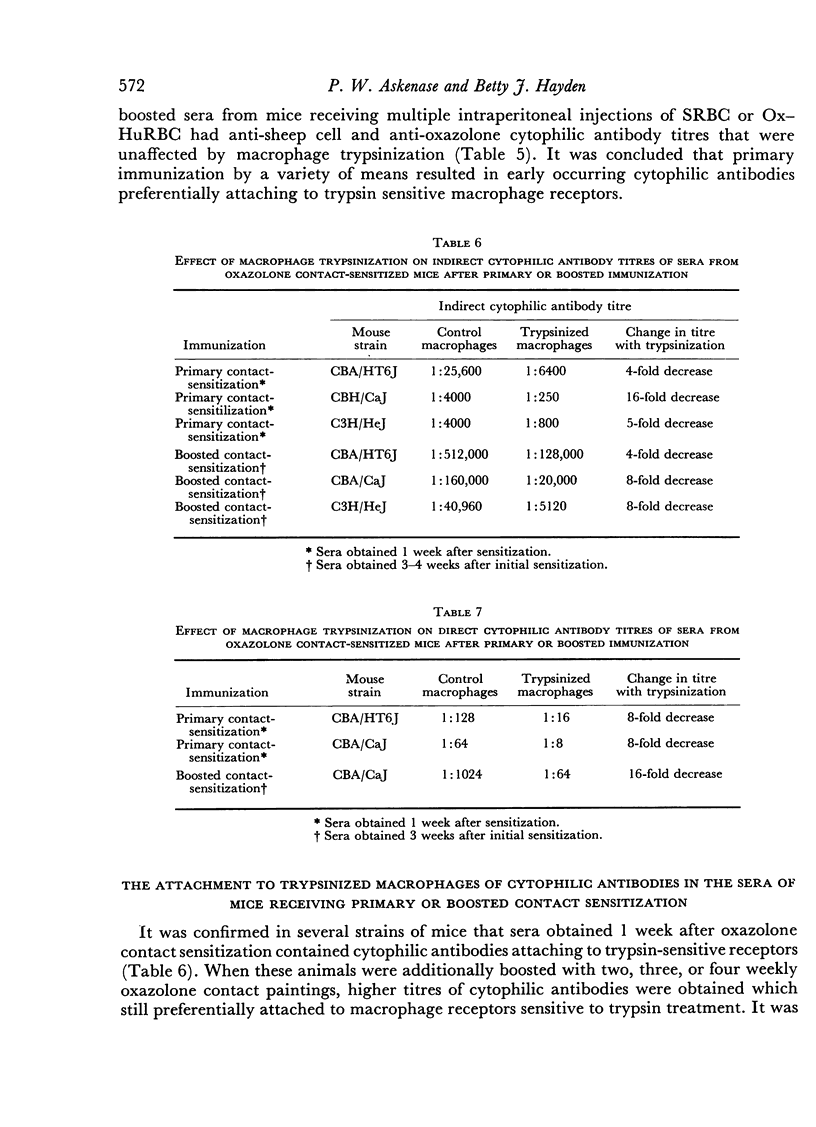
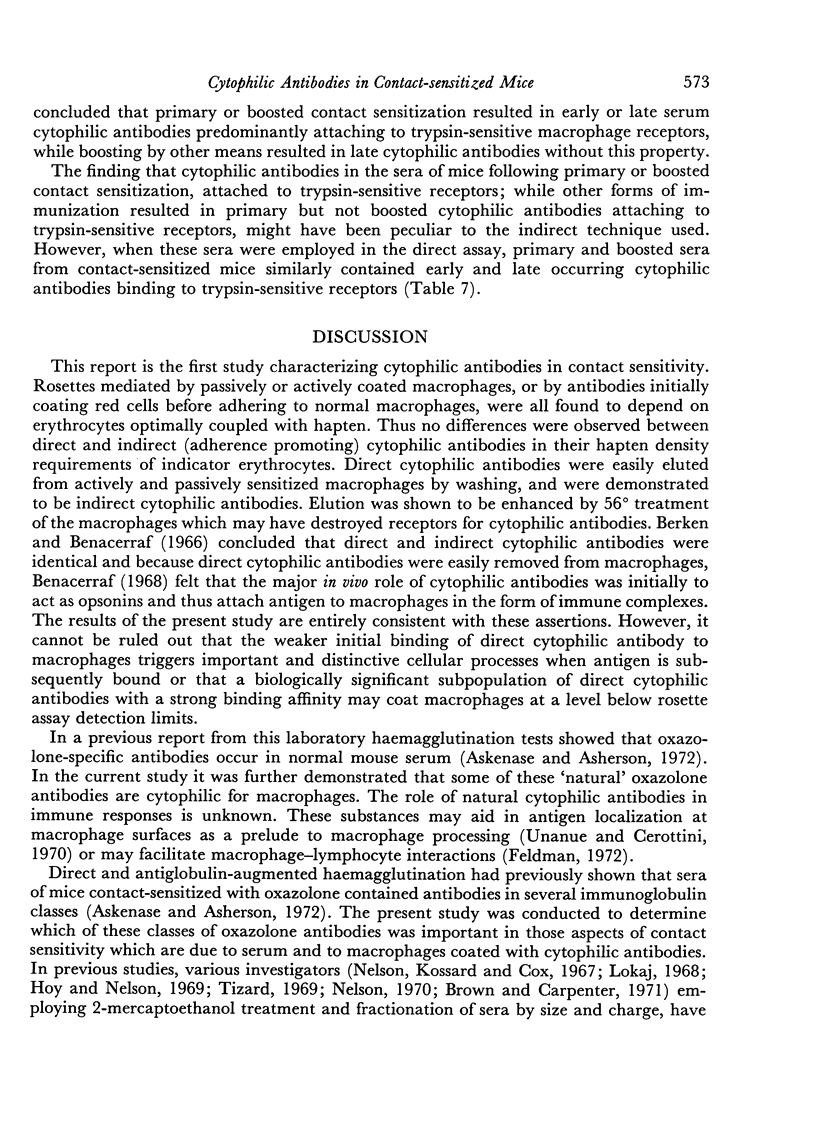
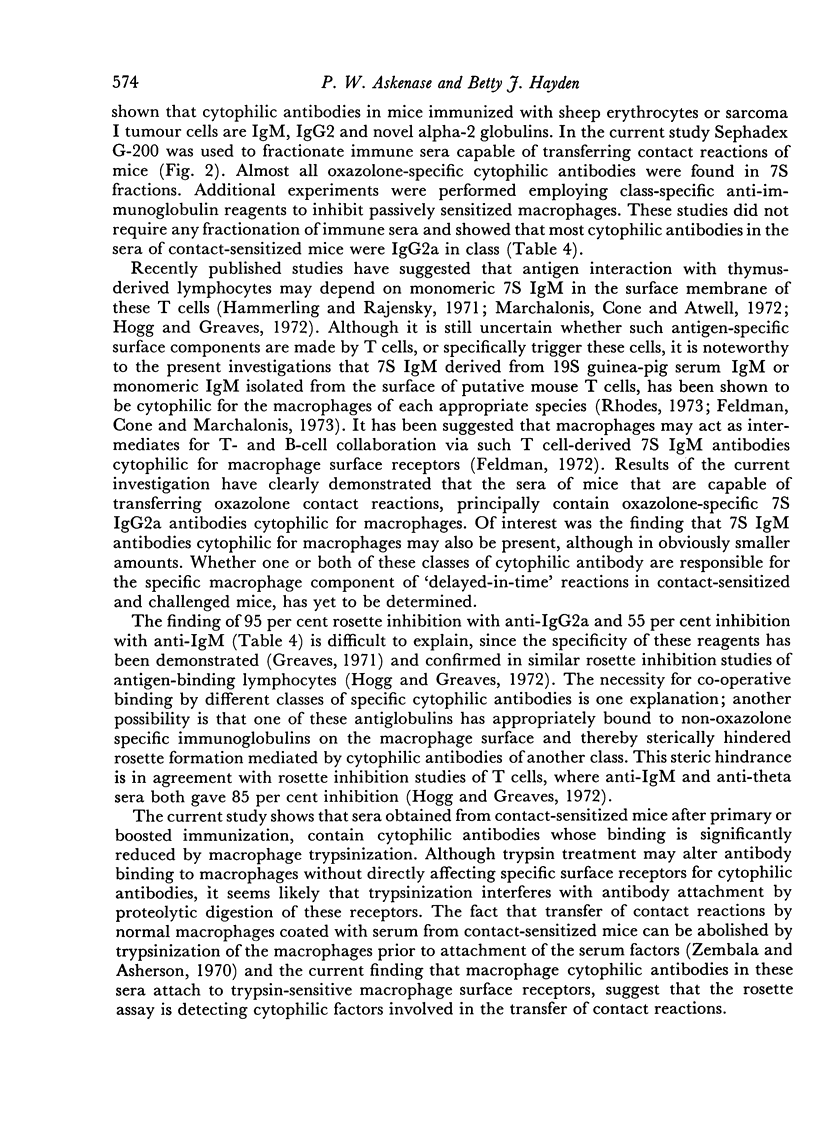
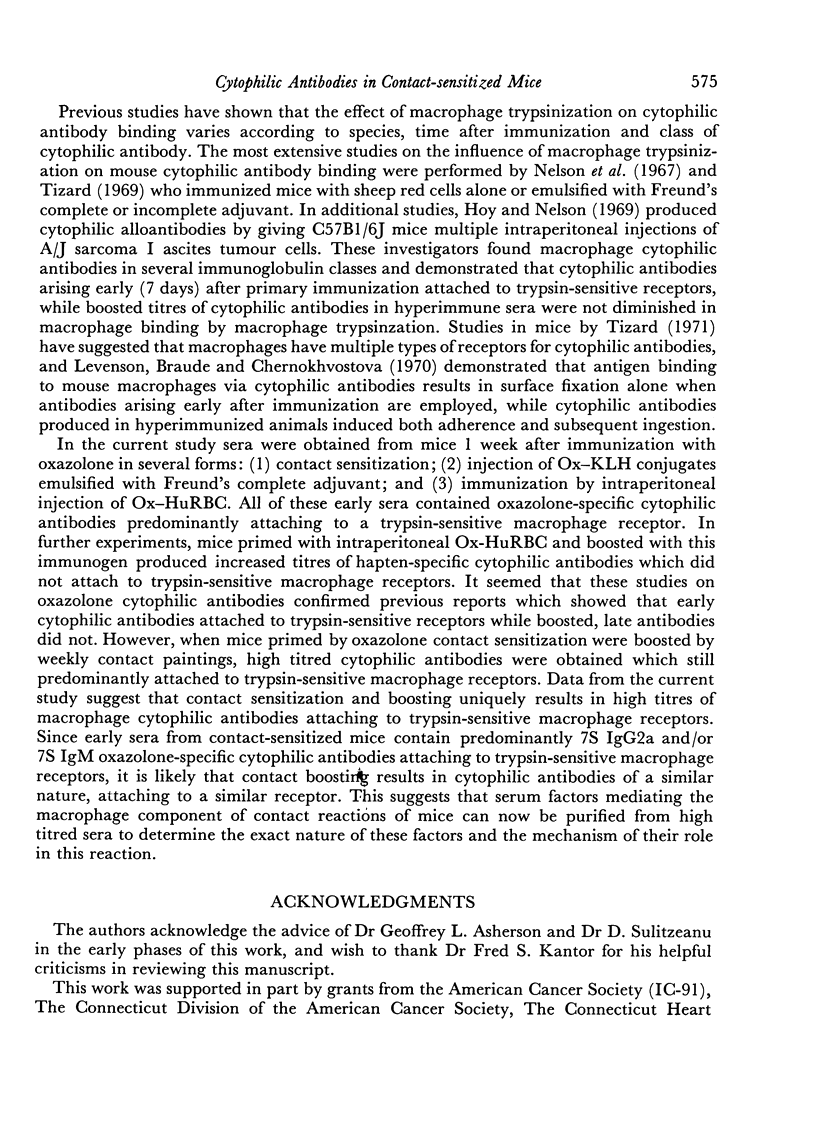
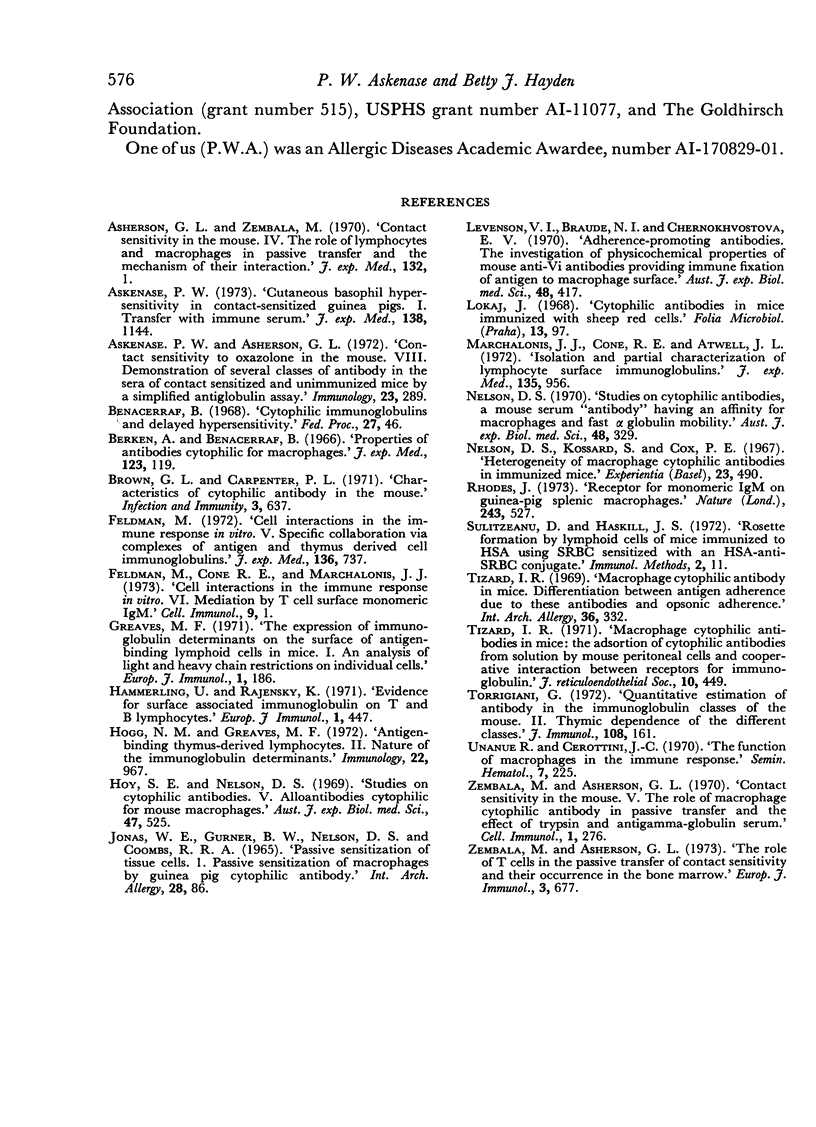
Selected References
These references are in PubMed. This may not be the complete list of references from this article.
- Asherson G. L., Zembala M. Contact sensitivity in the mouse. IV. The role of lymphocytes and macrophages in passive transfer and the mechanism of their interaction. J Exp Med. 1970 Jul 1;132(1):1–15. doi: 10.1084/jem.132.1.1. [DOI] [PMC free article] [PubMed] [Google Scholar]
- Askenase P. W., Asherson G. L. Contact sensitivity to oxazolone in the mouse. VIII. Demonstration of several classes of antibody in the sera of contact sensitized and unimmunized mice by a simplified antiglobulin assay. Immunology. 1972 Sep;23(3):289–298. [PMC free article] [PubMed] [Google Scholar]
- Askenase P. W. Cutaneous basophil hypersensitivity in contact-sensitized guinea pigs. I. Transfer with immune serum. J Exp Med. 1973 Nov 1;138(5):1144–1155. doi: 10.1084/jem.138.5.1144. [DOI] [PMC free article] [PubMed] [Google Scholar]
- Benacerraf B. Cytophilic immunoglobulins and delayed hypersensitivity. Fed Proc. 1968 Jan-Feb;27(1):46–48. [PubMed] [Google Scholar]
- Berken A., Benacerraf B. Properties of antibodies cytophilic for macrophages. J Exp Med. 1966 Jan 1;123(1):119–144. doi: 10.1084/jem.123.1.119. [DOI] [PMC free article] [PubMed] [Google Scholar]
- Brown G. L., Carpenter P. L. Characteristics of cytophilic antibody in the mouse. Infect Immun. 1971 May;3(5):637–641. doi: 10.1128/iai.3.5.637-641.1971. [DOI] [PMC free article] [PubMed] [Google Scholar]
- Greaves M. F. The expression of immunoglobulin determinants on the surface of antigen-binding lymphoid cells in mice. I. An analysis of light and heavy chain restrictions on individual cells. Eur J Immunol. 1971 Jun;1(3):186–194. doi: 10.1002/eji.1830010308. [DOI] [PubMed] [Google Scholar]
- Hogg N. M., Greaves M. F. Antigen-binding thymus-derived lymphocytes. II. Nature of the immunoglobulin determinants. Immunology. 1972 Jun;22(6):967–980. [PMC free article] [PubMed] [Google Scholar]
- Hoy W. E., Nelson D. S. Studies on cytophilic antibodies. V. Alloantibodies cytophilic for mouse macrophages. Aust J Exp Biol Med Sci. 1969 Oct;47(5):525–539. doi: 10.1038/icb.1969.147. [DOI] [PubMed] [Google Scholar]
- Hämmerling U., Rajewsky K. Evidence for surface-associated immunoglobulin on T and B lymphocytes. Eur J Immunol. 1971 Dec;1(6):447–452. doi: 10.1002/eji.1830010608. [DOI] [PubMed] [Google Scholar]
- Levenson V. I., Braude N. I., Chernokhvostova E. V. Adherence-promoting antibodies. The investigation of physicochemical properties of mouse anti-VI antibodies providing immune fixation of antigen to macrophage surface. Aust J Exp Biol Med Sci. 1970 Aug;48(4):417–427. doi: 10.1038/icb.1970.44. [DOI] [PubMed] [Google Scholar]
- Lokaj J. Cytophilic antibodies in mice immunized with sheep red cells. Folia Microbiol (Praha) 1968;13(2):97–105. doi: 10.1007/BF02868208. [DOI] [PubMed] [Google Scholar]
- Marchalonis J. J., Cone R. E., Atwell J. L. Isolation and partial characterization of lymphocyte surface immunoglobulins. J Exp Med. 1972 Apr 1;135(4):956–971. doi: 10.1084/jem.135.4.956. [DOI] [PMC free article] [PubMed] [Google Scholar]
- Rhodes J. Receptor for monomeric IgM on guinea-pig splenic macrophages. Nature. 1973 Jun 29;243(5409):527–528. doi: 10.1038/243527a0. [DOI] [PubMed] [Google Scholar]
- Sulitzeanu D., Haskill J. S. Rosette formation by lymphoid cells of mice immunized to HSA using SRBC sensitized with an HSA--anti-SRBC conjugate. J Immunol Methods. 1972 Nov;2(1):11–15. doi: 10.1016/0022-1759(72)90012-9. [DOI] [PubMed] [Google Scholar]
- Tizard I. R. Macrophage cytophilic antibody in mice. Differentiation between antigen adherence due to these antibodies and opsoni adherence. Int Arch Allergy Appl Immunol. 1969;36(4):332–346. [PubMed] [Google Scholar]
- Torrigiani G. Quantitative estimation of antibody in the immunoglobulin classes of the mouse. II. Thymic dependence of the different classes. J Immunol. 1972 Jan;108(1):161–164. [PubMed] [Google Scholar]
- Unanue E. R., Cerottini J. C. The function of macrophages in the immune response. Semin Hematol. 1970 Apr;7(2):225–248. [PubMed] [Google Scholar]
- Zembala M., Asherson G. L. Contact sensitivity in the mouse. V. The role of macrophage cytophilic antibody in passive transfer and the effect of trypsin and anti-gamma globulin serum. Cell Immunol. 1970 Sep;1(3):276–289. doi: 10.1016/0008-8749(70)90049-3. [DOI] [PubMed] [Google Scholar]


